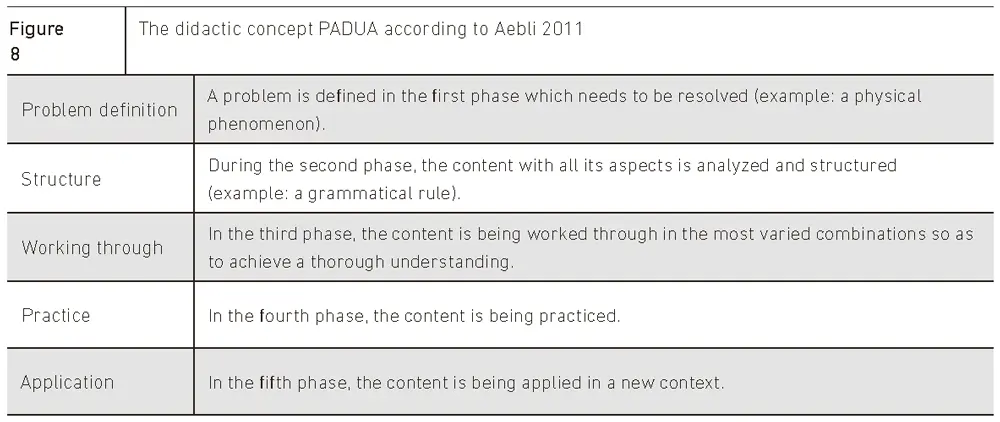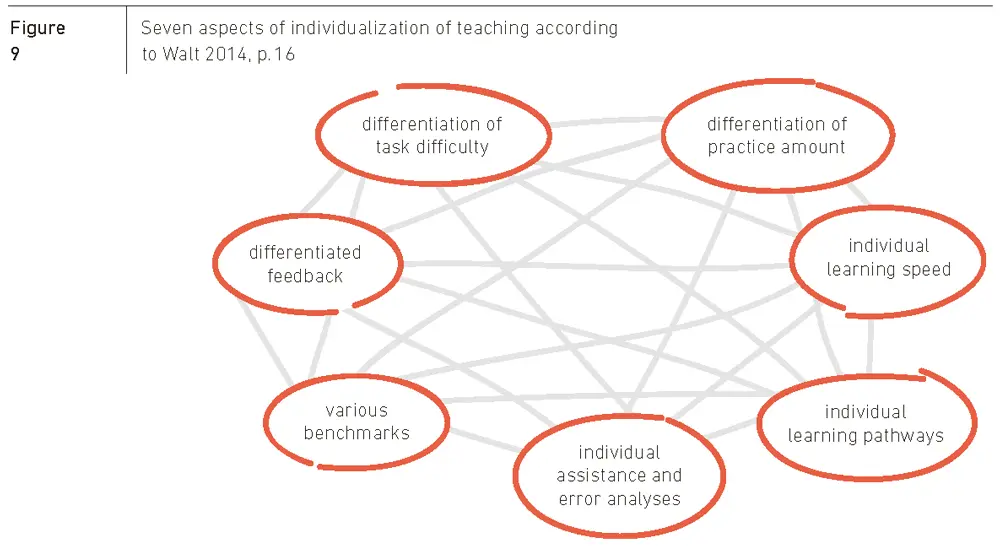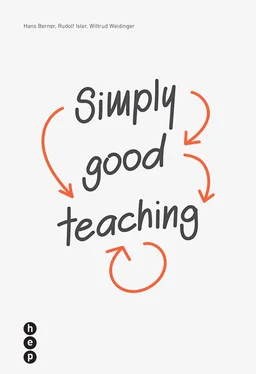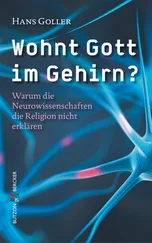For the articulation of an entire lesson, Grell and Grell25 suggest nine phases, which are normally applicable for any subject:
• Phase 0: direct preparation: everything that will be used for teaching the lesson (material, technology, etc.) is prepared before the lesson
• Phase 1: relaxed atmosphere: so-called “positive reciprocal affects” should be emitted, that is positive impulses of the teacher which will very likely receive a positive feedback from the learners (see chapter 2, p. 63, 68).
• Phase 2 : informational lesson beginning: the learners are informed about the goals and the course of the lesson
• Phase 3 : informational input: the necessary content information is provided, often in form of a short presentation
• Phase 4 : (assigning) learn tasks: the students’ assigned task is to independently perform an assignment within a definite time frame
• Phase 5 : The learners work on the learning tasks independently, alone or in groups.
• Phase 6 : transition phase: some time is allowed for finishing the learning assignment and concentrating again wholly on the class
• Phase 7 : feedback and continued work on the project: the results of the assigned learning tasks are presented and/or discussed
• Phase 8 : evaluation: review of the lesson and the learned material
If learning processes are planned while observing the above referenced phases, it can be assumed that the students actively engage with the educational contents and that the proportion of actual learning time is high.
Hans Aebli has developed the following articulation (known under the German acronym PADUA ), which is equally applicable for all areas of teaching. The approximate English equivalent would read PSWPA :

8 Variation and method variety – use them to improve the learning success of your students
The following seven chapters of this book present entirely different teaching and learning arrangements , allowing the instructors to pursue a rich variety of teaching approaches and to avoid a didactic monoculture. These concepts are graphically represented at the beginning of each chapter with the two coordinates of instructional versus explorative and teacher-guided versus student-determined located on a plane.
It should be noted that according to the MARKUS26 study it is not a maximum of method variety but an optimum that achieves the best results. According to this research study, those classes performed better which, besides direct instruction (lecture format), were exposed to three additional teaching and learning arrangements that were noticeably and not just selectively practiced. Pure frontal teaching as well as a teaching approach with excessively many forms of instruction were less successful. A median number of primarily applied methods therefore appears right. That a certain teaching method is generally superior to another in terms of learning success cannot be empirically substantiated. Moreover, besides a fundamental variety of methods, the choice of methods should also be adapted to the skills and aptitudes which are important for the learners in their later life.
9 Student orientation and support – take your students and their concerns seriously
The characteristic of student orientation and student support emerges already in the remarks about learning atmosphere and classroom management. Institutionalized forms may reveal that both principles are indeed practiced: class council, letter box for anonymous student questions, communication booklet, gathering of student feedback, consultation hours, question time, etc.
10 Consider the heterogeneity of the class and plan individual promotion and support
School classes are very heterogenous; even if the learners were born in the same year, there are major differences in terms of the type of learning (speed, perception, commitment, language requirements, etc.). In her publication of practical advice Individualization and internal differentiation – but how? 27 Marianne Walt mentions seven aspects of individualization which respond to heterogeneity issues. These seven aspects can be combined with one another depending on the necessity. The following graph can be used as a checklist for approaches to individualization. It should be ensured, however, that individualized teaching does not further student weaknesses; any reduction of requirements must be considered under the aspect that reduced requirements convey the implicit message that the student is not capable enough to do more.

11 No learning progress without consolidation and intelligent practice
It is important to practice often, but not for too long, in accordance with the learning level and with the support of the teacher, particularly concerning the techniques for learning and practicing . Contrary to the image, often created by teachers themselves, practicing can be fun, above all, when it is practiced voluntarily, when there is room for self-determination, when the success of practicing is easily recognized, and when there is interest in the subject matter. Practicing should affect various levels: the automaticity (e.g. mathematical algorithms), the increase in quality, and a deeper understanding (e.g. reading competence) and the level of transfers. Chapter 8 shows how the success of practicing can be checked.
12 Self-guided activity, learning tasks, and homework assignments: no learning without student activity
Self-activity implies that the learners work for a specified time alone, in pairs or in groups, without interruption and intervention by the instructor. Self-guided activities are possible in all subjects. The following chapters provide many different tips for self-guided activities.
The referenced text Rezept Lernaufgabe 28 (learning task recipe) shows how self-guided activities can be built into almost any average teaching session: following an introductory assignment by the teacher, preceded by informational input as needed, the students work autonomously for at least 15 minutes. This is followed by a presentation of the results or a review of sorts, for example. The study of the corresponding chapters by Grell and Grell is rewarding for any instructor and offers helpful practical tips.
Homework assignments are a controversial form of self-activity. Since learners receive more or less help with homework assignments depending on their social background, homework assignments tend to accentuate the inequality of opportunity. An alternative, which many schools have adopted, consists of offering supervised homework hours. It is undisputed that through homework assignments the time of (autonomous) learning can be increased significantly. Correctly designed homework activities require that they are rich in variation, that they support the processing and preparing of the subject materials, that they complement the subject and do not cover a new subject. Homework assignments must be clearly defined and limited in terms of time, so that the students and their parents know how much time should be spent on it.29
How to set learning goals and define competences
Learning goals
Establishing goals for your teaching is considered a preparatory activity which must occur in the context of comprehensive, differentiated lesson planning. Goals cannot be set in an isolated fashion, independent of other considerations and planning steps (see chapter 9).
Читать дальше














